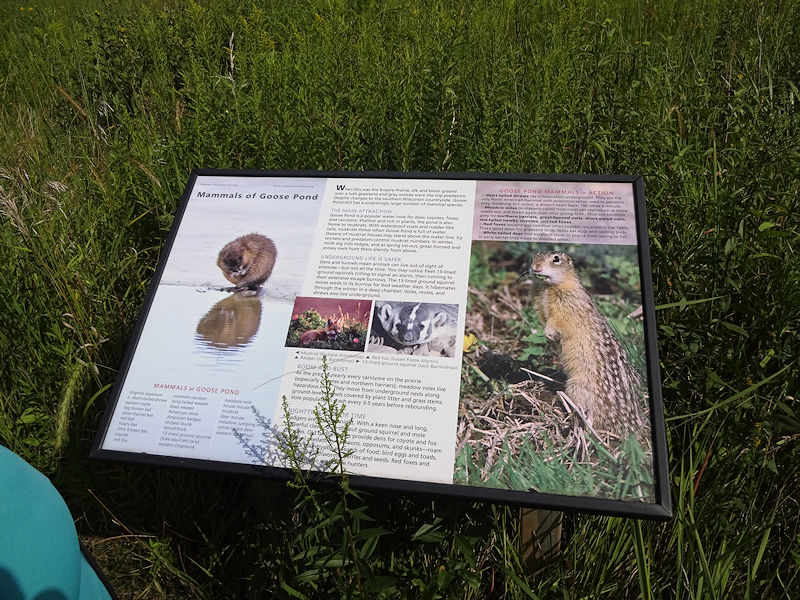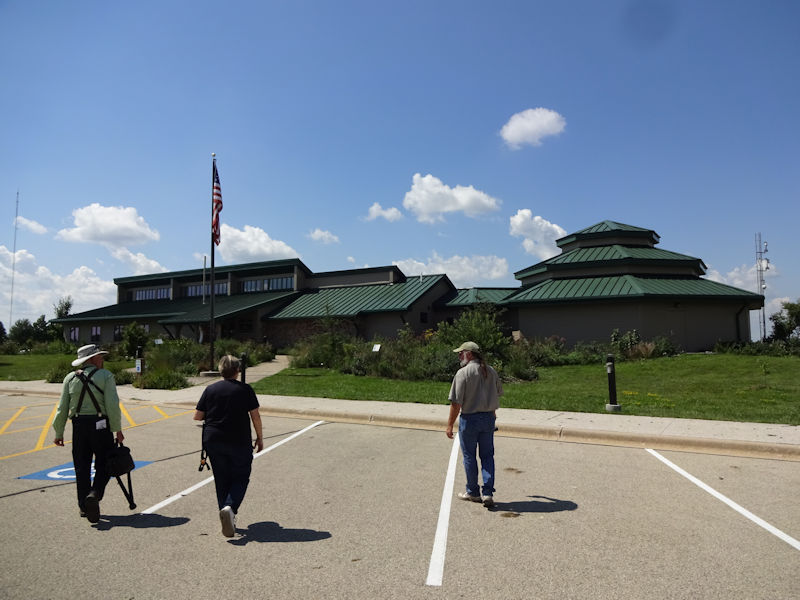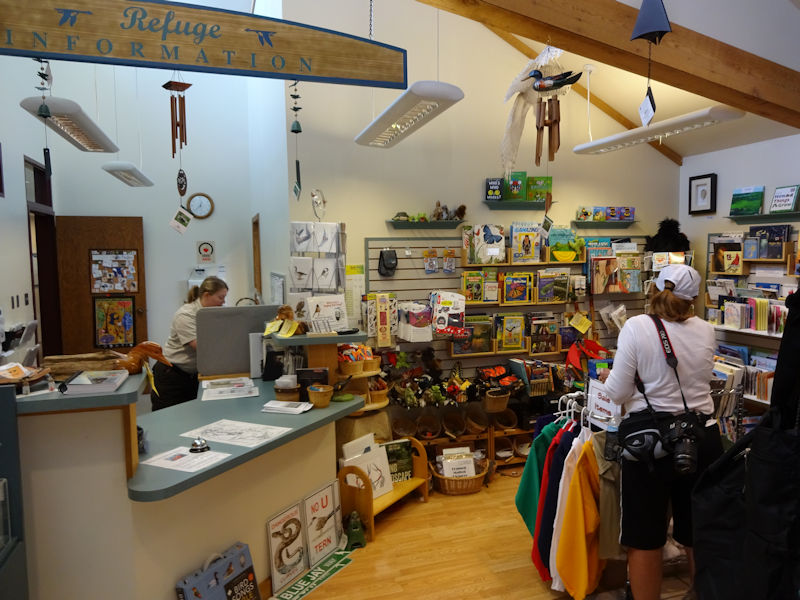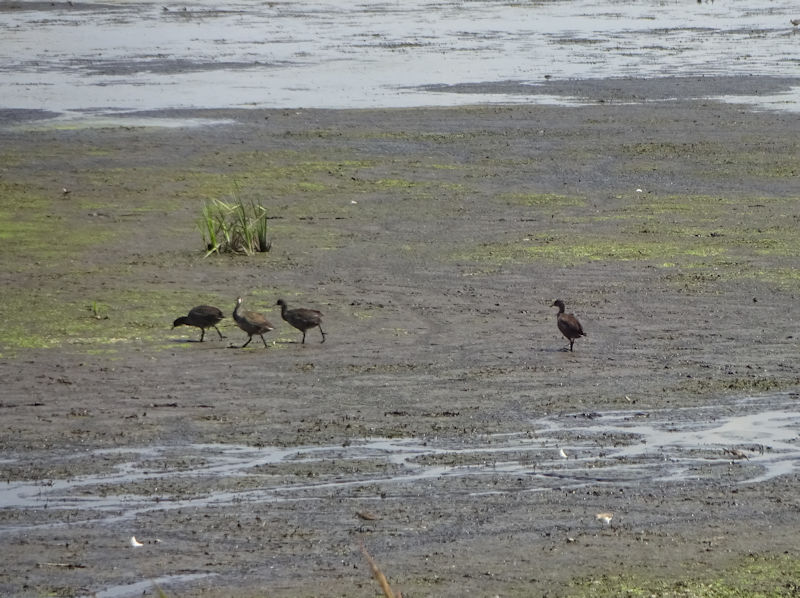|
 Dwight Peck's personal website Dwight Peck's personal website
Scenes from northern Wisconsin, summer 2016
More annual lakeside fun in the Northwoods
You may not find this terribly rewarding unless you're included here, so this is a good time for casual and random browsers to turn back before they get too caught up in the sweep and majesty of the proceedings and can't let go.
Visits to the Goose Pond Sanctuary and the Horicon Marsh, 15-16 August 2016

At the Madison Audubon Goose Pond Sanctuary, in rural Arlington north of Madison and south of Portage in Wisconsin, Mark Martin and Sue Foote-Martin, the Goose Pond managers, explain monarch butterfly tagging . . .

. . . and Kristin gets to release one. (The public is also invited to assist in monarch tagging sessions, like this one.)

The Madison Audubon Society purchased the site in 2003, and since then the formerly agricultural fields within the Sanctuary's properties are being returned to the original tallgrass prairie ecosystem.

Paths and information signs around the Sanctuary's prairies and ponds, which vary in size with the season, provide educational access for visitors.


Parcels of contiguous or nearby land are being acquired by gift or purchase, enlarging the site and providing diversity and presumably buffer zones. The Browne family provided funding for this section in honor of their parents.

Back to the "Kubota" for transport to the next stop: Mark; Sue Martin and Tracy Hames, Executive Director of the Wisconsin Wetlands Association and our trip organizer, idling in the Kubota; Liz and Kristin.

Mark explaining management priorities at the nearby Schoenberg Marsh WPA (Waterfowl Production Area)

Field study (You can see a short video clip of Mark releasing a tagged snowy owl at Goose Pond here.)

We're gone east to Mayville, Wisconsin, where we'll overnight in the rather elegant Audubon Inn before looking at the two parts of the Horicon Marsh tomorrow.

Beautiful downtown Mayville (where we found an excellent Mexican restaurant and then a cosy pub in the hotel itself)


The lobby of the Audubon Inn after dinner

The rooms are named after bird species to be seen at the Marsh (depending on the season)

Tomorrow morning, out to the big swamp.

The southern third of the Horicon Marsh is managed by the state, the Wisconsin Department of Natural Resources (DNR) and the Friends of Horicon Marsh -- here is their website.

A mastodon or woolly mammoth or something, once roaming wild all round here, now long gone -- this specimen is made out of rebars, or reinforcing steel bars for strengthening concrete structures.

A nearby, determined rebar guy

It's probably as well that they're long gone.

A view northward out over the Horicon Marsh. The United States designated the Horicon Marsh as a Wetland of International Importance under the Ramsar Convention on Wetlands in 1991, as the 8th such designation by the USA (of 38 sites presently in 2016). The website mentions the Ramsar designation but unfortunately as "the Ramsar Convention of the United Nations" -- the Convention on Wetlands is actually free-standing, with 169 member states as of 2016, in fact the only global environmental treaty that is NOT part of the United Nations system.

The excellent visitors centre was inaugurated in 2009 after fundraising efforts by the Friends association and matching funds from the state.

Downstairs, we're in the Explorium, an interactive exhibition with some brilliant displays of the history of the marsh and of the influences upon it by generations of Native Americans and Europeans. Here are Jeff Bahls, our guide; Kristin; and an absentee staff member represented here by a convincing replica.

Native Americans and the Horicon Marsh

Landmarks in white people's development of the region


Two fans of muskrat pelts comparing notes

A muskrat standoff; neither blinked.

The industrious replica is still hard at work

The gift shop

The obligatory group photo with the mastodon: Joellen, Tracy, Liz, Sue and Mark Martin, and Kristin, and (behind) a passing fan of mastodons

A lookout over the Horicon Marsh from a nearby high point

A marsh photo

Wisconsin DNR signage along the Rock River, "Horicon's Highway"

Now we've gone up the eastern side of the vast marsh to visit the US Fish and Wildlife Service visitors centre at the Horicon Marsh National Wildlife Refuge and Ramsar Site.

Information and the gift shop

This is the brief site description on the Horicon Marsh Ramsar Site from the Ramsar website:
Horicon Marsh
Country: United States of America
Site number: 511
Area: 13,355 ha
Designation date: 12-04-1990
Coordinates: 43°30'N 88°38'W
Horicon Marsh. 4/12/90; Wisconsin, 13,355 ha, 43°30’00”N 88°38’00”W. The Site is one of the largest intact freshwater wetlands in the USA and also one of the largest cattail (Typha spp) marshes in the world. It is an important staging area for numerous species of migratory birds, especially for Canada geese (Branta canadensis) and mallards (Anas platyrhynchos). In the autumn, 80% of the Mississippi Flyway population of Canada geese (around 1.1 million birds) and 2% of the biogeographic population of mallards use the Site during their migration. Other species, some of them endangered, use the area as a staging, nesting or feeding site. Among these are the bald eagle (Haliaeetus leucocephalus), the whooping crane (Grus Americana) and the yellow-throated warbler (Dendroica dominica). Apart from its importance for migratory birds, the Site is also important for maintaining the biological diversity of the region given the rapid loss of wetlands in the State. It is estimated that the extent of wetlands has decreased by almost 50% since 1850 in most of Wisconsin and by as much as 90% in south-eastern Wisconsin. The main threats are associated to human activities; agricultural runoff has resulted in increased sediment and nutrient loading while the construction of wind farms has resulted in bird mortality. Ramsar Site no. 511. Most Recent RIS Information: 2011.
It's not entirely clear from this summary whether the Ramsar Site includes both the federal and the state portions of the Marsh, but it appears from the latest RIS or "Ramsar Information Sheet" (PDF, p. 10) submitted by the US government in 2011 that both portions are included in the designation.

Displays for school groups and us

Vicious looking birds

A lone fan of conservation videos

A map showing the partition of the Horicon Marsh between US federal and state management. We are assured on both sides of the boundary that the two agencies, after a sometimes rocky past, cooperate seamlessly these days. They conduct managed burnings together, for example.

A privileged excursion into the marsh


Some photos of waterbirds

An observation platform, presently out of service for renovations

Our guide, Steven Lenz of the USFWS, the Complex Projects Leader for the Marsh, is describing the raising and lowering of water levels in the various "impoundments".

Signage near the public access area at the northern end of the Marsh

Out into the Marsh

Mark, Steven Lenz of the USFWS, Kristin, Himself, and Liz (photo by Sue or Tracy)

More waterbirds

And more (there are many people who could promptly identify all of those for you; in fact, many of those people were in our government vehicle and did so, but . . .)

A heron (that's just my opinion)


Cute

Back at the FWS Wildlife Refuge HQ, we're admiring the conservation gear.

Tracy is inspecting this thing closely, probably enviously.

An older version

The conservation management efforts of both the US and the state teams have been energetic and apparently extremely successful, but the work is never finished.

Volunteers and interns come along to help out with the work, and this is where they live.
This has been another great study tour with the Wisconsin Wetlands Association -- the Kakagon and Bad River Sloughs Ramsar Site in 2014 and the Door Peninsula Coastal Wetlands Ramsar Site last year -- and plans are afoot for next year: tentatively so far, the Upper Mississippi River Floodplain Wetland Ramsar Site.
     

 Feedback
and suggestions are welcome if positive, resented if negative, Feedback
and suggestions are welcome if positive, resented if negative,  .
All rights reserved, all wrongs avenged. Posted 31 October 2016. .
All rights reserved, all wrongs avenged. Posted 31 October 2016.
|
 Dwight Peck's personal website
Dwight Peck's personal website











































































































































































